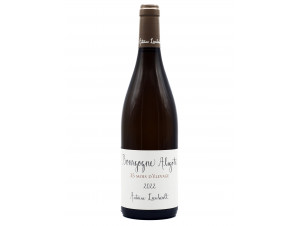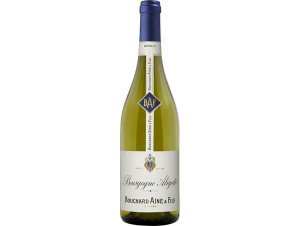You have no items in your shopping cart.
Wine Burgundy-Aligoté
-
Top Selling
-
Top Selling-20%
-
Top Selling-30%
- -17%
- -17%
- -18%
- -17%
- -17%
The Burgundy-Aligoté and the influence of Felix kir
Burgundy's wine history began in the 1st century AD, and really developed in the Middle Ages. It was during this period that the Burgundian vineyard grew in size and demonstrated its importance to the region's economy. In the 15th century, the "wines of Beaune" were to be marketed in Europe.
In the 17th century, in this region, the existence of a new native grape variety was discovered: the Aligoté. This grape variety was at the origin of the production of wines that were named "grands ordinaires". Very important for the local economy, it feeds the local consumption between wines of common consumption and wines of great quality reserved for a certain elite.
As for the Aligoté grape, it can be used to produce great white wines, as is the case at Domaine Ponsot for the Morey-Saint-Denis 1er cru Clos des Monts Luisants cuvée. This appellation is not to be confused with Bouzeron which is an appellation in its own right where Aligoté is king.
Diverse terroirs but a single grape variety, welcome to the Bourgogne-Aligoté appellation
The Bourgogne Aligoté appellation covers 91 communes in the Côte d'Or department, 85 communes in the Rhône department, 154 communes in the Saône et Loire department and 55 communes in the Yonne department, i.e. a distance of 250 km with geological, climatic and morphological diversities.
The vineyards of the appellation located in the department of Yonne are spread over the cuestas and the sides of the valleys of the Yonne, the Seine and their tributaries. The plots are chosen for their exposure which allows the grapes to reach maturity. The predominantly marly soils for the Vézelay region date from the Lower and Middle Jurassic. For the Joigny region, these geological formations date from the Upper Cretaceous and for the rest of the vineyards located in this department the sedimentary formations date from the Upper Jurassic.
For the vineyards of the Bourgogne Aligoté appellation which extend from Dijon to Lyon, the relief is relatively rectilinear due to its position on the edge of the Bressan ditch. The plots planted with Aligoté are mostly located in the piedmont.
The vineyards of this appellation, although strongly located in the foothills, can be found on hillsides, on cool plateaus or on the reverse side of well exposed cuestas. The implantation in hillside of the aligoté gives elegant, subtle and suitable wines for the guard. The climate is cool oceanic with continental and southern influences. Rainfall is regular and temperatures relatively low. The reliefs of Morvan and Charolais will reduce the humidity and increase temperatures. The part of the vineyard which is on the Saône plain is subject to continental influences with higher temperatures which can lead to periods of frost in winter and dry, sunny back seasons.
Burgundy-Aligoté wines are produced with a marked grape variety
Although the appellation extends over a vast territory that is very diverse both climatically and geologically, Aligoté is a white grape variety that has identifiable characteristics. The colour is golden yellow with green reflections. The nose presents aromas of citrus, yellow peach, toast with some floral notes. The palate is ample, with a fatty side balanced by a nice vivacity. The finish is sometimes marked by a very pleasant slight bitterness.
When the vines are planted on hillsides, the wines obtained are more complex due to the nature of the less rich soil. This is often the case for Bourgognes Aligoté from the Hautes Côtes de Beaune, Hautes Côtes de Nuits and the Yonne department. They can then be kept for a few years in the cellar.
Burgundy-Aligoté is much more than an aperitif wine
Aligoté is a grape variety unique to Burgundy, and the food pairings of Burgundy show us this. In fact, this wine goes well as an aperitif with gougères, snails or parsley ham. The liveliness and citrus notes will accompany seafood and oysters. The lightness of these wines allows them to be accompanied by white meat, salads and steamed vegetables. The fullness of the wine is suitable for a cheese platter.
The must-try Burgundy-Aligoté estates
There are many winegrowers who deserve to be known, and for that there is nothing better than to start by tasting the "entry-level" wines that give a good idea of the winegrower's work. As with all Domaine Leroy wines, its Aligoté is a must and a must for any wine lover. Domaine Leroy is one of Lalou Bize-Leroy's estates. She produces grands crus, premiers crus, villages as well as regional appellations and notably Bourgogne Aligoté. As on the Auvenay estate, she applies biodynamic methods with precision, rigour and conviction. This great lady is a myth and her wines are unique!
The Burgundy Aligoté wines of Domaine Sylvain Pataille are amazing and disconcerting in their elegance and finesse. Sylvain Pataille, winemaker in Marsannay, also practices biodynamic agriculture on his 14 ha estate. He vinifies among others 6 Bourgognes Aligotés.
Burgundy Rosé
Burgundy-Côte-Saint-Jacques
Burgundy-Côtes-du-Couchois
Burgundy-Coulanges-la-Vineuse
Burgundy-Épineuil
Burgundy-Grand-Ordinaire
Burgundy-Hautes-Côtes-de-Beaune
Burgundy-Hautes-Côtes-de-Nuits
Burgundy-Vézelay
Crème de fruits
Criots-Bâtard-Montrachet
La Tache
Liqueur
Mâcon Supérieur
Mâcon-Bray
Mâcon-Chaintré
Mâcon-Cruzille
Mâcon-Vergisson
Mazoyères-Chambertin
Pouilly-Loché
Romanée-Saint-Vivant
Ruchottes-Chambertin
Vin de Pays de Sainte-Marie-la-Blanche
Vin de Pays des Coteaux de l'Auxois




































 TWIL - Achat de Vin
TWIL - Achat de Vin


